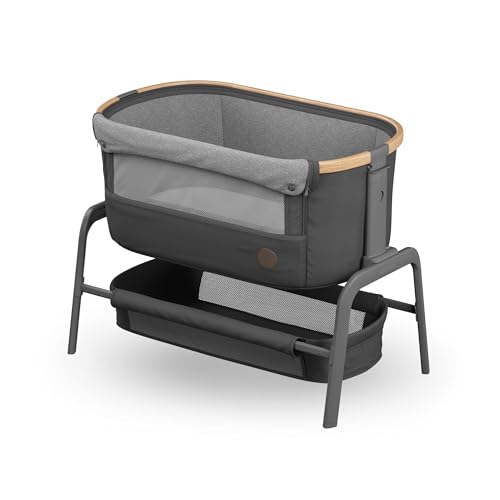Three Reasons Why The Reasons For Your Tots And Cots Is Broken (And How To Repair It)
Tots and Cots: A Comprehensive Guide for Parents
When it comes to making sure a safe and comfy sleeping environment for children and toddlers, the choices parents make— varying from cribs to cots— can substantially impact their wellness. Today's short article dives deep into the complexities of choosing the very best sleeping plans for tots, emphasizing safety, design, functionality, and how these options develop as a child grows.
Understanding Tots and Cots
Tots generally describe kids, particularly toddlers aged in between 1 to 3 years, while cots are the sleeping plans particularly developed for babies and toddlers. Cots Newborn sleeping devices for this age group includes various kinds of cots, cribs, and young child beds.
Types of Cots
Different designs exist to fulfill the diverse needs of both parents and kids. Below is a list laying out the most common kinds of cots offered:
Standard Crib
- A traditional crib is designed for infants and normally consists of sides that can be gotten used to different heights.
Convertible Crib
- This kind of crib can transform into a toddler bed, daybed, or full-sized bed as the kid grows, making it a long-lasting financial investment.
Portable Crib
- Likewise called travel cots, these are light-weight and quickly foldable, perfect for traveling or smaller sized home.
Co-Sleeper
- A co-sleeper crib connects to the side of the moms and dads' bed, allowing for simple access while ensuring the baby has a separate and safe sleeping space.
Toddler Bed
- A young child bed is a small bed that looks like a basic bed however is developed specifically for young children, normally featuring safety rails.
Mini Crib
- Mini cribs are smaller than standard cribs, making them an excellent choice for tight spaces, however they appropriate for babies only.
Safety Considerations
Making sure security is critical when selecting a cot for a kid. Here are vital safety standards parents should think about:
- Check for CPSC Certification: Ensure that the cot adheres to the Consumer Product Safety Commission (CPSC) standards.
- Avoid Drop-Sides: Cots with drop-sides have actually been linked to safety risks, and the current safety policies forbid them.
- Utilize a Firm Mattress: A company bed mattress decreases the risk of suffocation and should fit comfortably within the cot.
- Keep Bedding Simple: Use a fitted sheet and prevent pillows, comforters, and packed animals that can position suffocation risks.
- Follow Weight and Age Guidelines: Ensure the child has actually not surpassed the cot's weight limitation and is still within the suggested age.
Transitioning from a Cot to a Toddler Bed
The transition from a cot to a toddler bed can be a psychological turning point for both parents and kids. Here are actions to alleviate the transition:
Timing
Choosing when to shift can be subjective, however it's normally recommended to make the switch in between 18 months and 3 years, based on aspects like:
- Physical Ability: If the kid is climbing out of the cot.
- Potty Training: Consider transitioning if the child is bathroom training and requires much easier access.
- Behavior: Exhibiting indications of maturity, such as following guidelines or expressing a desire for self-reliance.
Tips for Making the Transition Smooth
Include Your Child: Let the kid pick their brand-new bedding or bed decor to impart excitement about the change.
Keep Routine Consistent: Maintain the child's bedtime routine to offer comfort throughout this duration of change.
Describe the Change: Discuss the transition to a young child bed positively, making it seem like a fantastic adventure.
Safety Measures: Place the bed against the wall or use bed rails to prevent falling throughout sleep.
Selecting the Right Bed
When choosing a young child bed, moms and dads need to think about factors like:
- Height: Low-profile beds are ideal for toddlers who might fall out during sleep.
- Sturdiness: Ensure the bed can withstand active play as well as sleep.
- Design and style: Choose a style that complements the child's room and is attracting the child.
Picking the best cot for your youngster can be a daunting procedure, but understanding the alternatives available, key security considerations, and the best timing for transitioning to a toddler bed can make this journey much easier for moms and dads. Investing time and effort into these decisions will ensure that your kid has a safe, comfortable, and supporting sleep environment.
- * *
FAQs
1. What is the distinction between a cot and a crib?
- A cot is typically a smaller bed created for more youthful toddlers, while a crib is a bigger bed that is typically appropriate for babies approximately 3 years of ages.
2. When should I move my kid from a crib to a toddler bed?
- The transition time is generally in between 18 months and 3 years; this change is based upon the child's physical abilities and behavioral signs.
3. How can I guarantee my child is safe while sleeping?
- Constantly follow safety standards, utilize a company mattress with an easy bed linen arrangement, and monitor the cot's weight limitation.
4. What should I do if my kid attempts to climb up out of the cot?
- If your kid is climbing up out, it may be time to think about transitioning to a toddler bed to avoid falls.
5. Can I utilize the exact same mattress when transitioning?
Normally, it is best to replace the crib mattress with one that is particular to the toddler bed. Ensure it fits snugly and follows safety standards.
- *
By considering these elements, parents can design healthy sleep practices and provide their children with a safe and secure environment that promotes peaceful sleep. Buying quality sleeping plans will add to the child's general advancement and happiness.
